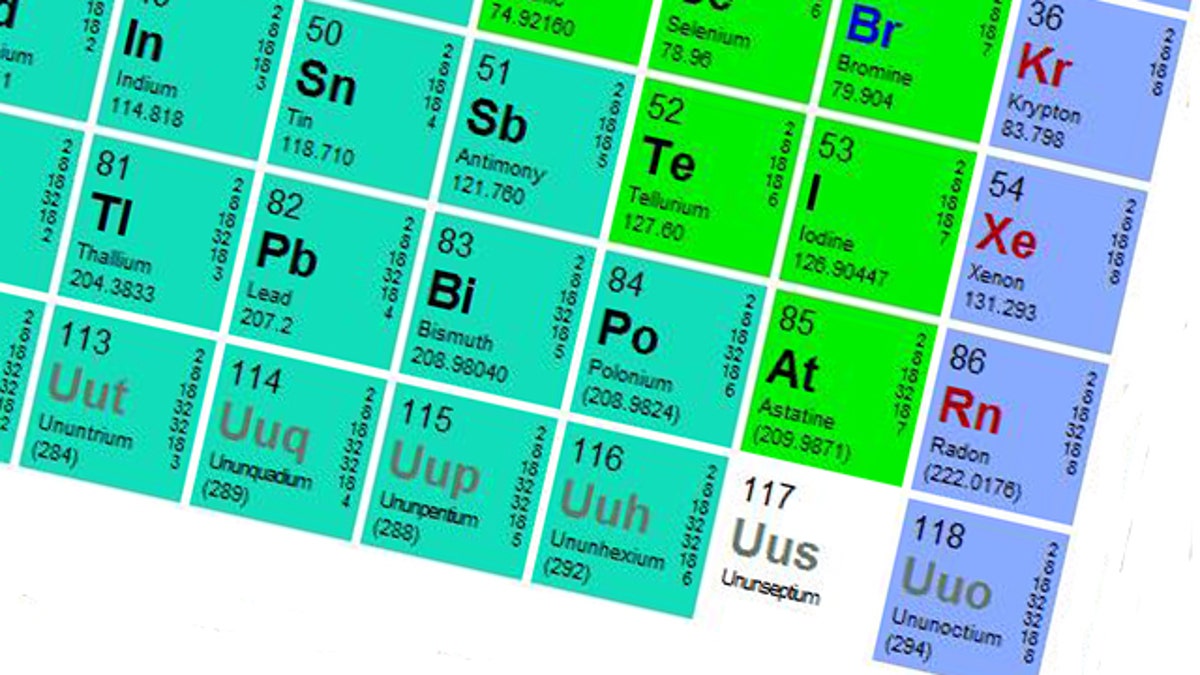
You know the periodic table that hung on the wall of every science class you took at school? As of today, it’s wrong. Or more precisely, it's inaccurate.
One of the biggest changes in decades is set to be made to the periodic table, with the atomic weight of 10 elements altered to better reflect how they occur in nature.
For more than a century, scientists have assigned a standard single value to the atomic weights of elements. Now they say those numbers aren't as static as first believed.
The International Union of Pure and Applied Chemistry (IUPAC) has decided that the weights of 10 elements will now be expressed as ranges instead of a single value, with an upper and lower limit.
The elements are hydrogen, lithium, boron, carbon, nitrogen, oxygen, silicon, sulphur, chlorine and thallium.
"We actually give a starting and ending mass for the element that we believe encompasses all normal sources that you'll find in the world, and we think this is the better way of doing it."
You might think such a change is purely scientific, but it actually has some big consequences for research and industry.
Precise measurements of the presence of isotopes in carbon can be used to determine the purity and source of foods like vanilla and honey.
Sports dopers should particularly beware — measuring the atomic weight of carbon in human testosterone is how they test for performance enhancing drugs.
All synthetic testosterone is created from soya beans. The new weightings mean scientists will be able to test more accurately for the levels of carbon and hydrogen in the urine of athletes.
"You measure the carbon and hydrogen ratios in the urine of a cyclist and you find that the testosterone molecules and the ones that come from this testosterone (soy) root all have one profile and all the other molecules that come from your usual cholesterol have a different one," Prof Hibbert said.
"It sticks out like a sore thumb, and that's how we’ve been able to catch a lot of people in a lot of areas."
Our pollution levels could also be higher than we think. The weight of nitrogen, chlorine and other elements are used to measure pollution levels in streams and groundwater.
However while they may be important, the changes aren't out of the blue. Dr Hibbert, who is the secretary of the analytical division of IUPAC, said the periodic table was revised more often than people thought.
"These things come periodically, every now and then. We review it, and we don't always make changes to every single element when we do," he said.
"When we met four years ago we changed the atomic weight of zinc and this caused a bit of furore at the time, because we changed it by a relatively large amount.
"I know it makes for good copy, but the world hasn't just suddenly decided, like Pluto, 'we've got fed up with a couple of elements so we're going to chuck them out'."
Dr Hibbert said it was premature to say the update would change the way chemistry was taught and text books weren't going to suddenly go out of date.
"No, of course not. For most calculations, people will just carry on as before," he said.
"A lot of things you do don't require that kind of precision, so we're not going to change the first year chemistry text book and probably half my colleagues won't notice that this has happened at all.
"The world won't in fact grind to a halt as the result of it, but, for people at my end who do worry about these things, then yes, there will be some changes in the way we do calculations."
Read more at News.com.au.




















